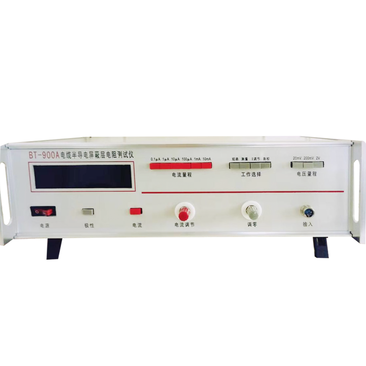Equipment for Exporting Conductor Resistance Measurement Tools and Devices
Understanding Conductor Resistance Measurement Equipment and Its Export Market
In the modern electrical engineering landscape, the importance of measuring conductor resistance cannot be overstated. The resistance of conductors directly affects the efficiency and safety of electrical systems. As the demand for high-performance electrical machinery and devices has escalated worldwide, so has the need for reliable conductor resistance measurement equipment. This article delves into the significance of these devices, their applications, and the export market surrounding them.
The Importance of Conductor Resistance Measurement
Conductor resistance measurement is a critical aspect of electrical testing. It helps in determining the quality of electrical connections, assessing the integrity of cables, and identifying potential issues that could lead to failures in electrical systems. Electrical resistance can be influenced by various factors such as temperature, material composition, and length of the conductor. Therefore, precise measurement techniques are essential to ensure optimal performance.
High conductor resistance can lead to power losses, overheating, and ultimately, equipment failure. This has a cascading effect on operational costs and safety risks. Thus, industries—including telecommunications, energy, and manufacturing—rely heavily on accurate measurement tools to mitigate these risks.
Types of Conductor Resistance Measurement Equipment
Several types of equipment are used to measure conductor resistance, each suited for specific applications
1. Micro-ohm Meters These are specialized instruments designed for measuring very low resistance values, often in the micro-ohm range. They are commonly used in applications involving the testing of connections in power generators, transformers, and circuit breakers.
2. Four-Wire (Kelvin) Measurement This method uses four leads to eliminate the impact of contact and lead resistance, providing highly accurate measurements. It’s particularly useful in laboratory settings and for high-precision applications.
3. Resistance Bridge A more complex instrument that allows for precise measurements of resistance using the principles of balance in electrical circuits. Resistance bridges are typically used in research and calibration labs.
4. Clamp Meters Some modern clamp meters come with built-in capabilities to measure conductor resistance, making them versatile tools for field technicians who may need to measure current, voltage, and resistance in a single device.
conductor resistance measurement equipment exporters

Export Market Trends
The global market for conductor resistance measurement equipment is witnessing significant growth, driven by the expansion of industries requiring stringent quality testing and standards compliance. Countries with robust electrical infrastructure projects, such as India, China, and those in the Middle East, are particularly notable for increasing demand.
Several key factors are influencing the export market
1. Technological Advancements Innovations in technology have led to the development of more sophisticated measurement devices. Wireless connectivity, data logging, and integration with software for analysis are features increasingly sought after in modern equipment.
2. Regulatory Compliance As electrical standards become more stringent across various sectors, manufacturers are compelled to invest in high-precision measurement tools to ensure compliance. This includes adhering to international standards such as ASTM and IEC.
3. Rising Investment in Infrastructure Countries investing in upgrading their electrical grids and renewable energy systems contribute significantly to the demand for conductor resistance measurement equipment. This trend is evident in regions like Asia-Pacific and North America where infrastructure projects are on the rise.
4. Emerging Markets Developing nations are becoming substantial consumers of electrical testing equipment due to industrialization. As they aim to improve their electrical distribution networks, the need for reliable measurement tools grows concurrently.
5. Trade Agreements Countries are entering into trade agreements that facilitate the export of engineering tools, making it easier for manufacturers to reach international markets. This is particularly beneficial for exporters who can leverage their technological edge.
Conclusion
The market for conductor resistance measurement equipment is thriving, fueled by advancements in technology and the need for stringent testing standards. As industries continue to evolve and expand globally, the demand for high-quality measurement tools will remain paramount. Exporters in this sector must stay abreast of market trends and technological advancements to effectively meet the needs of diverse industrial applications, ensuring a safer and more efficient electrical infrastructure worldwide. Understanding the intricacies of this market can position exporters to successfully navigate its challenges and opportunities.
-
Why the Conductor Resistance Constant Temperature Measurement Machine Redefines Precision
NewsJun.20,2025
-
Reliable Testing Starts Here: Why the High Insulation Resistance Measuring Instrument Is a Must-Have
NewsJun.20,2025
-
Flexible Cable Flexing Test Equipment: The Precision Standard for Cable Durability and Performance Testing
NewsJun.20,2025
-
Digital Measurement Projector: Precision Visualization for Modern Manufacturing
NewsJun.20,2025
-
Computer Control Electronic Tensile Tester: Precision and Power for the Modern Metal Industry
NewsJun.20,2025
-
Cable Spark Tester: Your Ultimate Insulation Assurance for Wire and Cable Testing
NewsJun.20,2025
 Copyright © 2025 Hebei Fangyuan Instrument & Equipment Co.,Ltd. All Rights Reserved. Sitemap | Privacy Policy
Copyright © 2025 Hebei Fangyuan Instrument & Equipment Co.,Ltd. All Rights Reserved. Sitemap | Privacy Policy
